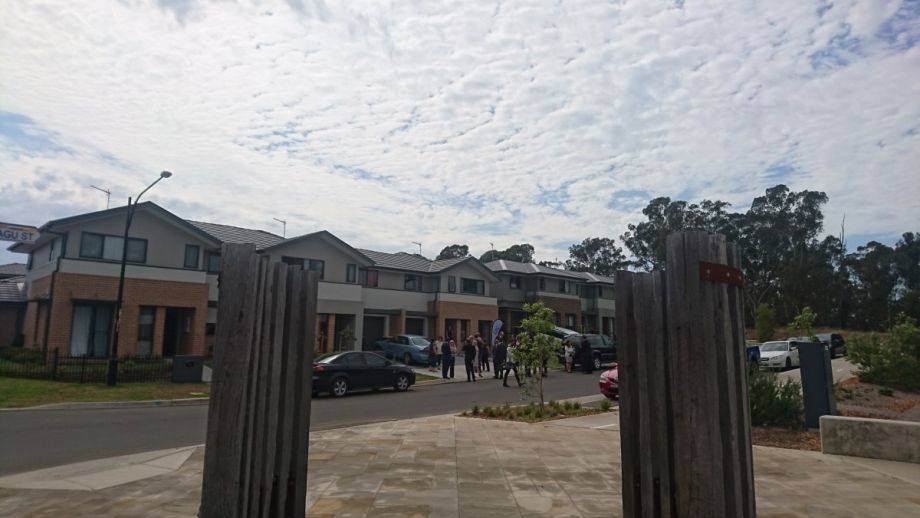In Australia, less than four percent of households live in public housing — much higher than the U.S., where fewer than one percent of households live in public housing. Still, alarmed by the Australia figure, a team of Australian (and a few Scottish) housing experts set out to investigate inclusionary housing programs. Their new report, commissioned by the Australian Housing and Urban Research Institute, details inclusionary housing programs used around the U.S. and the U.K.
The U.S. is home to more than 1,379 inclusionary housing programs, according to a different working paper from last year. Those programs were collectively responsible for the creation of 173,707 units of affordable housing. Meanwhile, the Australian researchers found, England’s inclusionary scheme has generated approximately 83,800 new affordable units between 2005 and 2016.
Australia’s use of inclusionary regulations, by comparison, has so far been limited—partly due to constraints in the country’s regional planning laws.
“We really do draw on American experience when we look at what we might do in Australia in terms of planning affordable housing,” says Nicole Gurran, the report’s lead author and a planning and housing professor at the University of Sydney’s School of Architecture, Design, and Planning.
Inclusionary housing programs, typically region- or city-specific, do not follow a “one-size-fits-all” strategy, says Gurran. They’re generally tailored to local planning systems and housing markets; mandatory programs are especially encouraged for residential areas that are undergoing rezoning or that are experiencing substantial infrastructure investment, since, in both cases, land values increase enough to offset the cost of producing affordable housing.
The researchers considered the dozens of cities in California that have instituted local ordinances that require developers to provide affordable housing as part of their development projects. California obliges its municipalities to offer density bonuses, which allow additional building height or floor space to developers who provide affordable housing units. They also looked at New York City, where an inclusionary housing program shifted from voluntary to mandatory in 2016.
Typically, voluntary inclusionary programs that are incentive-based yield significantly smaller numbers of new affordable housing units than do mandatory programs. In Oakland, for instance, incentive-based programs that aren’t supplemented by inclusionary requirements have proven ineffective, the study notes.
“Even in a booming market,” Gurran said, “voluntary incentives [are worth] virtually nothing.”
Two regions of Australia — South Australia and New South Wales — have begun to implement inclusionary housing programs, but they haven’t had nearly the kind of success, in numbers, as the U.S. and U.K. programs. Mandatory inclusionary zoning in South Australia, with a 15 percent target rate of affordable housing units in new residential areas, has triggered the creation of approximately 5,500 low-cost dwellings. That amount is equivalent to roughly 17 percent of the region’s overall housing supply. In New South Wales, an incentive-based housing program generated an estimated 2,000 affordable rental units in Sydney, which makes up around one percent of the city’s overall housing stock.
Unlike the U.S., Australia’s national government provides few subsidies such as federal tax credits that financially assist developers in producing affordable housing, Gurran explains. “The nonprofit- or government-funded proportion of housing development is…less than two percent of new supply,” she says. From Australian developers’ perspective, therefore, building dwelling units that are affordable for low-to-moderate-income earners can often seem cost-prohibitive.
“To get new houses up, we need that private development sector to build them,” she says. “If you require developers to build too much, they won’t build at all; and if you don’t have enough new supply, that pushes up prices across the market.”
What Gurran and her study’s co-authors hope to convey to Australian policymakers, planners, and developers is that affordable housing isn’t as financially infeasible as they may think. To the contrary, mixed-income housing development can provide developers economic stability in otherwise-volatile housing markets. “Affordable housing obligations aren’t making overall housing development unviable,” Gurran said, “as long as the requirements are predictable, known in advance, and consistently applied.”
That said, government subsidies are imperative for encouraging the creation of affordable housing, particularly for extremely low-income citizens in areas of high residential need, Gurran notes. “Inclusionary planning is not a substitute for government funding. You’ll still need some other source of grant to subsidize people’s rents or the capital costs of providing the dwelling, or both.”
Above all, the study underscores the vital role of development rules in the production of affordable housing, since market-driven housing projects alone don’t yield sufficient supplies of low-cost dwelling units.
“The idea that just increasing housing production overall will make it affordable for people of low and moderate incomes, isn’t borne out by the evidence,” said Gurran. “We do need specific policy interventions.”

Aline Reynolds is a New York-based journalist and urban planner. As a staff editor and reporter, she has chronicled the post-9/11 revitalization of Lower Manhattan, including the rebuilding of the World Trade Center. Her work has appeared in the American Planning Association’s Planning Magazine, Agence-France Presse, and Newsday.
.(JavaScript must be enabled to view this email address)
















